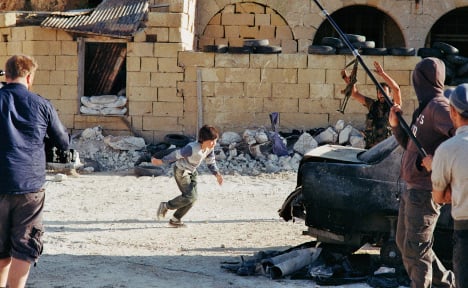The video shot and directed by Oslo-based media guerilla artists was believed to show the conflict in Syria. It supposedly showed a Syrian boy rescuing a girl from gunfire.
However a group of Norwegians came forward and admitted they are behind the movie which was filmed this summer in Malta, NTB reported.
The footage was edited to deceive audiences into believing it was documentary footage of real-life suffering in Syria.
Watch the 'Syrian Hero Boy' video:
The video's scriptwriter, Lars Klevberg, admitted he deliberately made the mockumentary to generate debate about children in conflict zones.
Klevberg, a 34-year-old film director based in Oslo, said to the BBC: "If I could make a film and pretend it was real, people would share it and react with hope. We shot it in Malta in May this year on a set that was used for other famous movies like Troy and Gladiator. The little boy and girl are professional actors from Malta. The voices in the background are Syrian refugees living in Malta."
Klevberg justified the use of guerrilla media tactics to raise awareness to a genuine and worthwhile cause.
"By publishing a clip that could appear to be authentic we hoped to take advantage of a tool that's often used in war; make a video that claims to be real. We wanted to see if the film would get attention and spur debate, first and foremost about children and war. We also wanted to see how the media would respond to such a video," he said.


 Please whitelist us to continue reading.
Please whitelist us to continue reading.
Member comments